Since consumer prices are going nuts in other places around the world, one might presume the entire global economy is as heated, or nearly behind, the American slice. And that, like what’s really behind rate hikes, would be a mistaken presumption in every sense.
In Japan, for example, that country’s Ministry of Finance just this week announced record highs for both exports and imports. According to its estimates for the month of March 2022, the value of all goods exported from Japan to the rest of the world tallied ¥846 billion ($6.6 billion), a seemingly healthy 14.7 percent increase from the value of goods exported in March 2021.
On Japan’s import side, the value of goods brought into the country continued to explode. Last month, inbound trade added up to a whopping ¥887 billion ($6.9 billion), representing a truly enormous 31.2 percent year-over-year surge.
In our current case, though, these figures hide an increasingly dark secret; they are obscuring the real economic situation because of what has been the driving force behind them. Usually, trade data can be relied upon as a global proxy because volumes mostly follow nominal values. That is, the monetary value of goods traded isn’t too different from the actual quantity of items moved around the world.
This isn’t the first drop in recent months, either, rather March’s negative was the second of the previous three, also the third over the last six. The six-month average change is now just about zero, a particularly ominous development barely on the plus-side of a contractionary threshold.
In other words, drastic increases in global prices, particularly for commodities that are what Japan imports most, have concealed what has already developed into a very serious downturn creating prospects for worse. Maybe even trade, goods, economy-wide recession.
As bad as this misconception about the overall state of the goods economy in Japan is, it is much worse, even more disturbing when confronting what’s happened in the forgotten services sector.
Japan’s Ministry of Economy, Trade, and Industry publishes output estimates for all Japanese industries, from raw materials (primary), to manufacturing and assembly (secondary), and finally the country’s services (tertiary industries). The Ministry’s latest update for the month of February 2022 leaves no doubt about the state of the rest of this economy apart from the goods pricing effect.
The index for tertiary industries, services, fell again in February for the third month in a row. Those relatively small declines aren’t really the issue, except insofar as they represent the Japanese economy’s continued lengthy struggle. As you can see above, the entire services sector has never come close to recovery from the 2020 recession, let alone the prior one which developed late in 2019 before the arrival of the pandemic.
The only “heat” in Japan is commodity prices, and that isn’t inflation but rather supply shock driving demand destruction pain only just now beginning to reach minus signs in a spreading number of economic accounts stripped of the price illusion.
Those price changes are the product of fewer, not more products, too, very different from monetary inflation. Manufacturing and industry output levels are as lackluster as trade volumes—as you should expect (above) given the weakness illustrated by both trade volumes and services. The vast majority of pricing issues haven’t really been the demand for goods so much as how challenging and increasingly costly it has become to move relatively fewer goods around to their ultimate end-point destinations.
While we might pity those poor Japanese (and what’s now revealed by a better grasp of their economy’s critical under—rather than overperformance), my point is that these struggles are hardly unique to the residents and resident businesses of Japan alone.
Unbeknownst to most people, but not the bond market, the whole global economy was actually struggling last year even while consumer, producer, and commodity prices skyrocketed, and now more and more this year much of it looks to be potentially rolling over while those remain (for now) unusually high.
The whole world closed out 2021 without a real recovery from 2020, especially services, and then more negative factors and even results by the start of 2022. Anyone focused strictly on the nominal and only on goods, meaning prices and various CPIs, is, like Japanese trade volumes, missing the boat(s).
This leaves the Federal Reserve hiking rates because of the illusion, not the real economy. Rate hikes wouldn’t solve inflation even if that was the problem. Since it isn’t, no wonder financial alarm bells have been ringing so loudly.
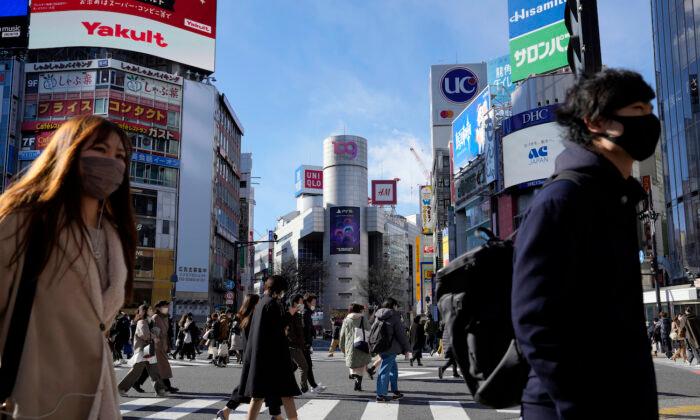

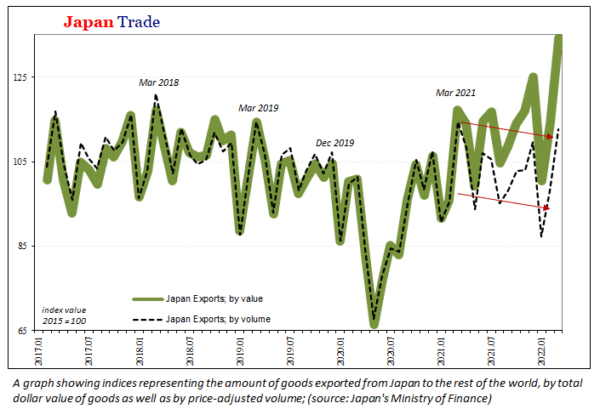
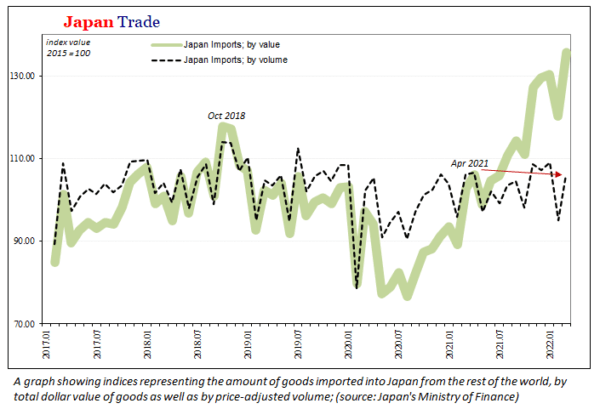
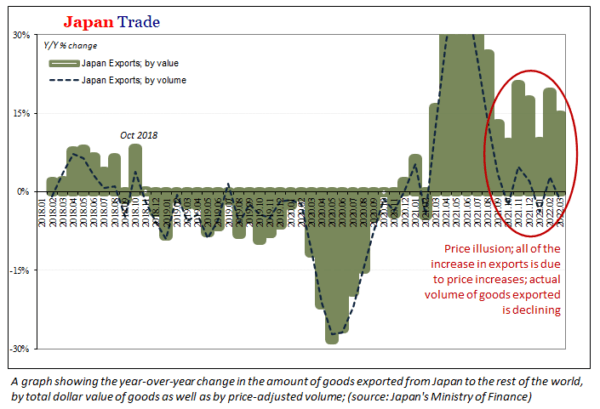
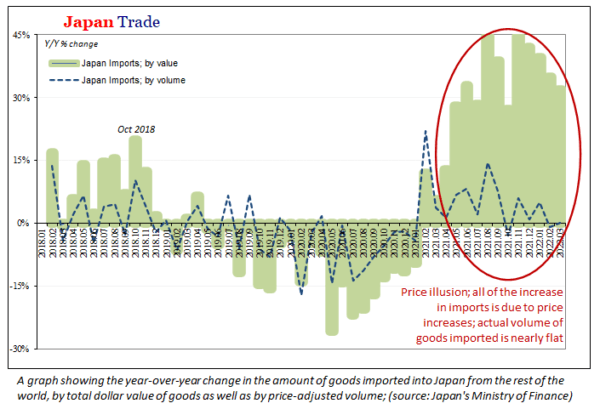
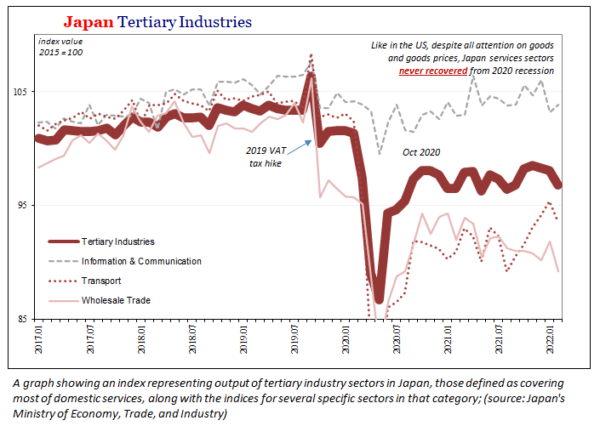
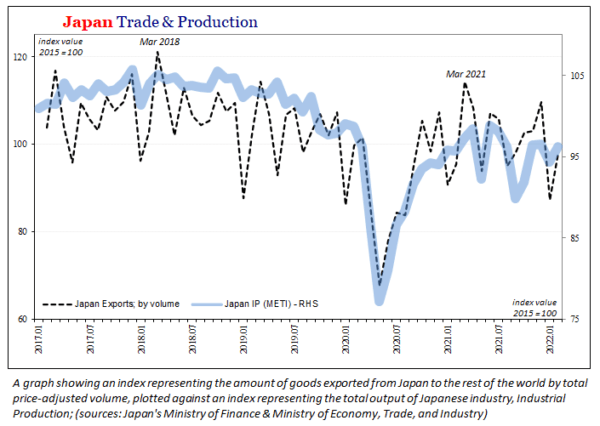
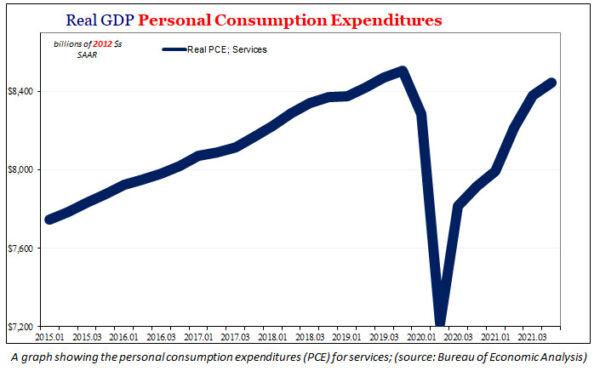
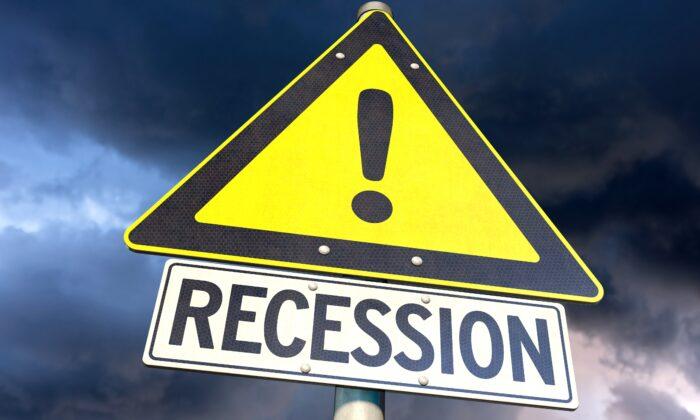
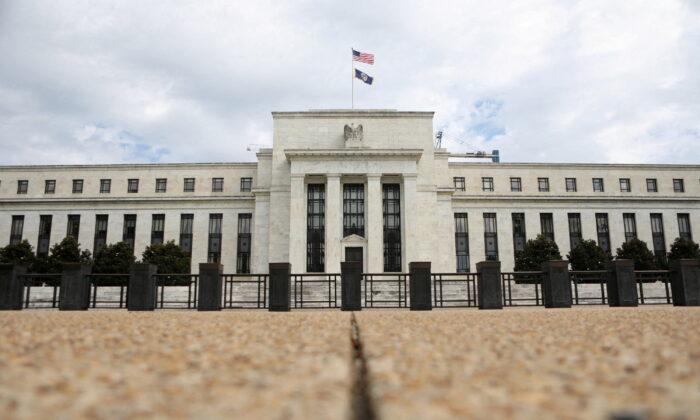


Friends Read Free